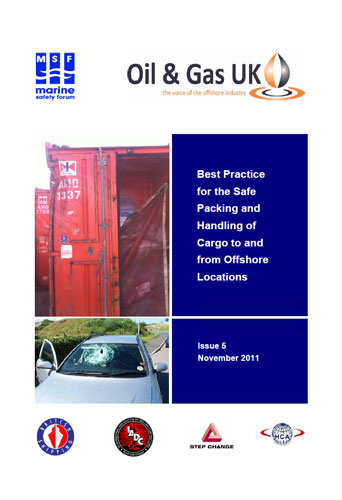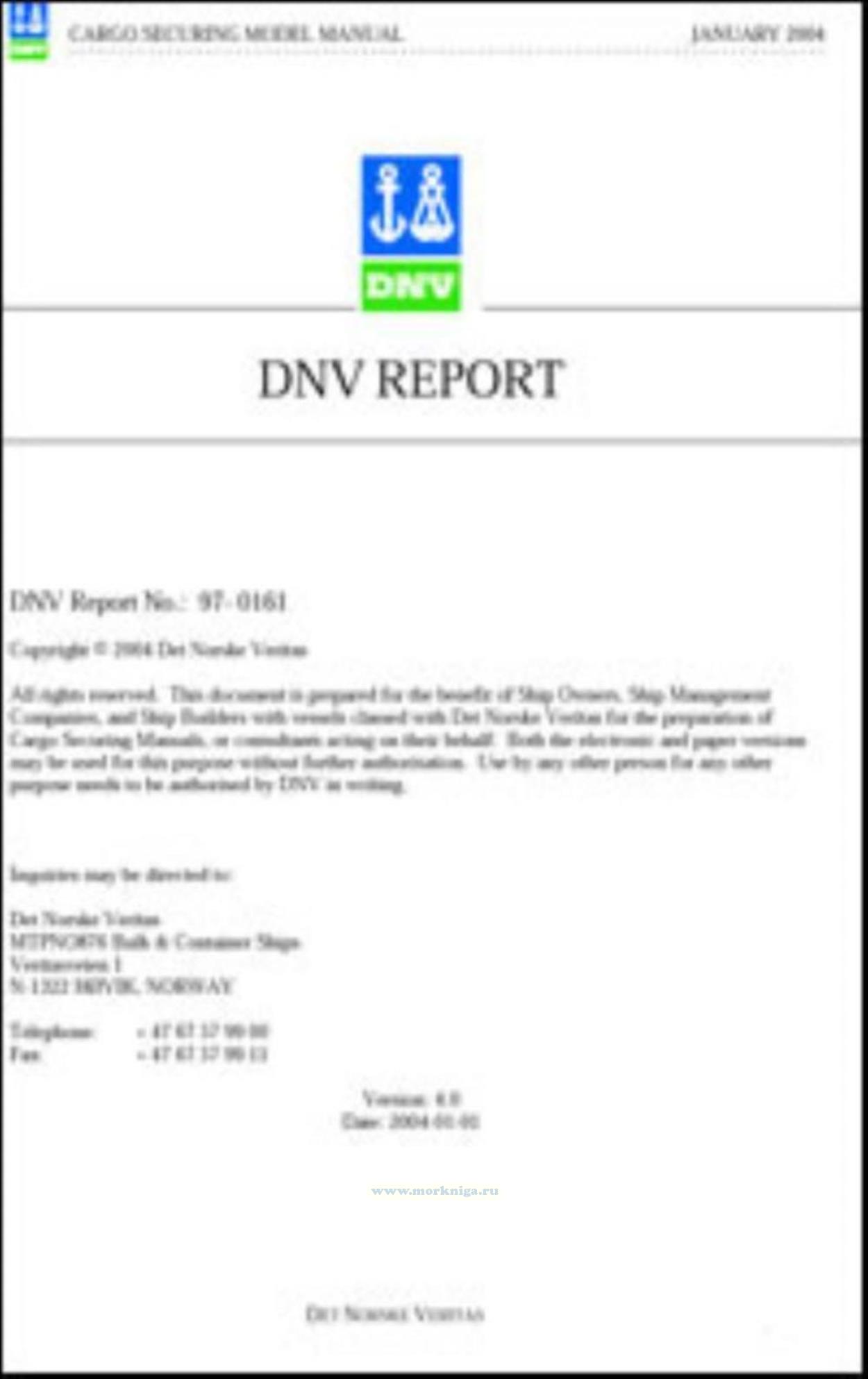Best Practice for the Safe Packing and Handling of Cargo to and from Offshore Locations. Issue 5/Передовая практика безопасной упаковки и обработки грузов в Оффшорные пункты и обратно. Выпуск 5
Книга на английском языке
Seaforth Maritime, Shell, Swire and Texaco was established by the Marine Safety Forum (MSF) to consider the hazards and risks associated with the safe packaging and handling of cargo to and from offshore installations. The objective of the workgroup was to identify areas where additional guidance would help to secure improvements in safety.
In accordance with the three-year review strategy, a new workgroup (see Cross Industry Workgroup section) was formed to develop the document beyond the original focus, taking into consideration changes in legislation, good working practices and learnings from incidents.
The safe carriage of goods relies upon the correct packaging, securing, labelling and handling procedures. Operators, logistics service providers, aircraft operators, shipping and vendor companies have produced this guidance, which provides practical advice.
Contents
Section page
1.0 Preface
2.0 Introduction
3.0 Scope and application
4.0 Abbreviations
5.0 References
6.0 Responsibilities and duties
6.1 Vendors
6.2 Haulage Contractors
6.3 Logistics Service Providers
6.4 Vessel Operators
6.5 Aircraft Operators
6.6 Offshore Operators
7.0 Dropped objects
7.1 Checking for Dropped Objects
7.2 Verification of checks
7.3 Dropped Objects Prevention Scheme (DROPS)
8.0 Lifting and slinging
8.1 Lifting Operations
8.2 The Organisation of Lifting Operations
8.3 Undertaking the Lifting Operation
8.4 Pre-Use Inspection & General Precautions
9.0 CCU Cargo guidance
9.1 Introduction
9.2 Responsibilities for Cargo Checks within the Supply Chain
9.3 General
9.4 Cargo Handling and Shipping Equipment
9.5 General Checks for Open and Closed CCUs
9.6 General Checks for Specialist Equipment
9.7 Packing Cargo in CCUs
9.8 Closed Container – Key Points from Checklist
9.9 Open Container – Key Points from Checklist
9.10 Snagging Hazards
9.11 CCU Standards and Inspection Requirements
9.12 Marking
9.13 Expiry of Test Certificate(s) whilst Unit(s) Offshore
9.14 Types of CCUs
10.0 Carriage of goods by air
10.1 Freight Classifications
10.2 General Guidance and Freight Packaging
11.0 Non conforming cargo
11.1 Inspection Procedures
11.2 Cargo Unfit for Shipment
11.3 Non Conformance Code
12.0 General documentation
13.0 Dangerous goods by sea
13.1 General
13.2 Dangerous Goods Flowchart – Inbound
14.0 Dangerous goods by air
14.1 General
14.2 Dangerous Goods by Air Documentation
14.3 Division of Responsibilities & Training required
14.4 Facilities Required
14.5 Procedure for shipping Dangerous Goods
14.6 Retention of Paperwork
14.7 Minimum Requirements for Training Curricula
15.0 Waste management
15.1 Controlling Waste Offshore
15.2 Special Waste (Hazardous/Harmful)
15.3 Recyclable Waste
Appendices
Appendix 1 – Offshore tanks – Chemicals, oils, fuel and waste
1.1 Introduction
1.2 General
1.3 Vessel (Tank) Types
1.4 IMO Inspection and Testing of Tank Vessel
1.5 General Checks for Offshore Tanks
1.6 Plate Markings
1.7 Offshore Tank – Key Points from Checklist
Appendix 2 – Portable gas equipment
2.1 Introduction
2.2 General
2.3 Cylinder Types
2.4 General Checks for Portable Gas Equipment
2.5 Specific Requirements for Gas Quads/Packs/MEGCs
2.6 Specific Requirements for Lift Frames
Appendix 3 – SPecial cargo
3.1 General
3.2 Unusual Shape and Weight Distribution
3.3 Back-loading of Bulk Underdeck Cargo to Support Vessel Tanks
3.4 Bulk Transfer to/from Portable Tanks
3.5 Examples of Special Cargo
Appendix 4 – Drilling tubulars
4.1 General
4.2 Bundled Tubulars
4.3 Individually Slung Tubulars
4.4 Access and Egress
4.5 Examples of Drilling Tubulars
Appendix 5 – Examples of packing
5.1 Illustrations of Packing
Appendix 6 – Offshore waste control pack
Appendix 7 – Document examples
7.1 Oil & Gas UK Cargo Summary Ticket for Outbound Cargo
7.2 Oil & Gas UK Inbound Pocket Checklist
7.3 Oil & Gas UK Inbound Pocket Checklist - Tanks
7.4 Oil & Gas UK Cargo Summary Ticket for Outbound/Inbound Tanks
7.5 Cargo Safety and Security Tag
7.6 Dangerous Goods and Marine Pollutants Declaration
7.7 Dangerous Goods by Air Declaration
7.8 Instructions in Writing
7.9 Oil & Gas UK Cargo Rejection Note – Sea
7.10 Oil & Gas UK Cargo Rejection Note – Air
Appendix 8 – Lifting operations categorisation and controls table
Appendix 9 – Non conformance code checklist
Appendix 10 – Abnormal or wide load matrix
Appendix 11 – Use of tag lines
11.1 Introduction
11.2 Risks
11.3 Mitigation of Risks
Appendix 12 – Examples of bad practice
Appendix 13 – Lifting equipment inspection criteria
13.1 Introduction
13.2 Wire Rope Slings
13.3 Chain Slings
13.4 Webbing Slings
13.5 Shackles
Feedback





 Cargo Securing Model Manual. DNV Report
Cargo Securing Model Manual. DNV Report